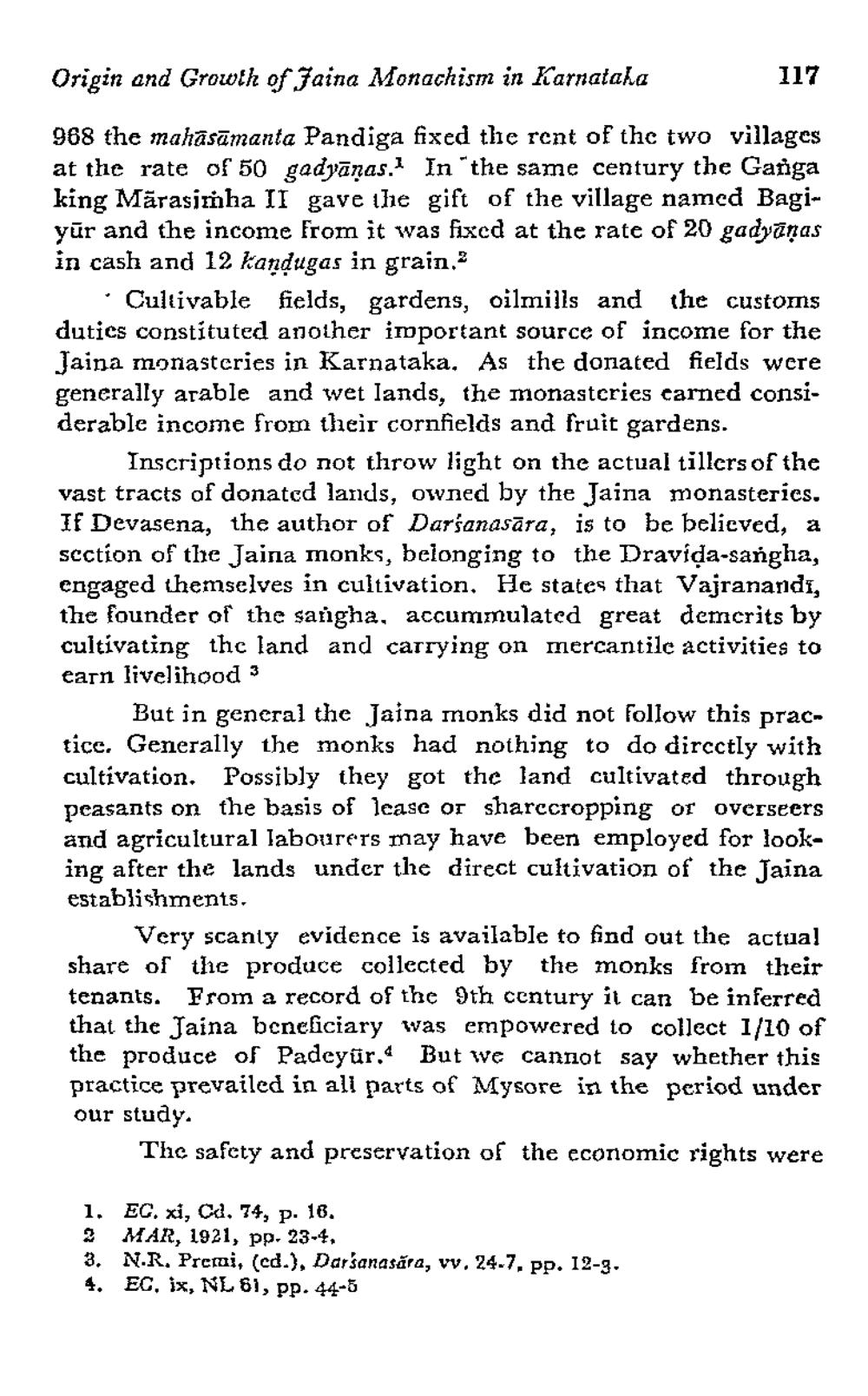________________
Origin and Growth of Jaina Monachism in Karnataka
968 the mahāsāmanta Pandiga fixed the rent of the two villages at the rate of 50 gadyānas. In the same century the Ganga king Mārasimha II gave the gift of the village named Bagiyur and the income from it was fixed at the rate of 20 gadyāṇas in cash and 12 kandugas in grain.2
·
Cultivable fields, gardens, oilmills and the customs duties constituted another important source of income for the Jaina monasteries in Karnataka. As the donated fields were generally arable and wet lands, the monasteries earned considerable income from their cornfields and fruit gardens.
117
Inscriptions do not throw light on the actual tillers of the vast tracts of donated lands, owned by the Jaina monasteries. If Devasena, the author of Darŝanasāra, is to be believed, a section of the Jaina monks, belonging to the Dravida-sangha, engaged themselves in cultivation. He states that Vajranandi, the founder of the sangha, accummulated great demerits by cultivating the land and carrying on mercantile activities to earn livelihood 3
But in general the Jaina monks did not follow this practice. Generally the monks had nothing to do directly with cultivation. Possibly they got the land cultivated through peasants on the basis of lease or sharecropping or overseers and agricultural labourers may have been employed for looking after the lands under the direct cultivation of the Jaina
establishments.
Very scanty evidence is available to find out the actual share of the produce collected by the monks from their tenants. From a record of the 9th century it can be inferred that the Jaina beneficiary was empowered to collect 1/10 of the produce of Padeyür. But we cannot say whether this practice prevailed in all parts of Mysore in the period under our study.
The safety and preservation of the economic rights were
1. EC. xi, Cd. 74, p. 16.
2 MAR, 1921, pp. 23-4.
3. N.R. Premi, (ed.), Darsanasara, vv, 24.7, pp. 12-3.
4. EC, ix, NL 61, pp. 44-5




